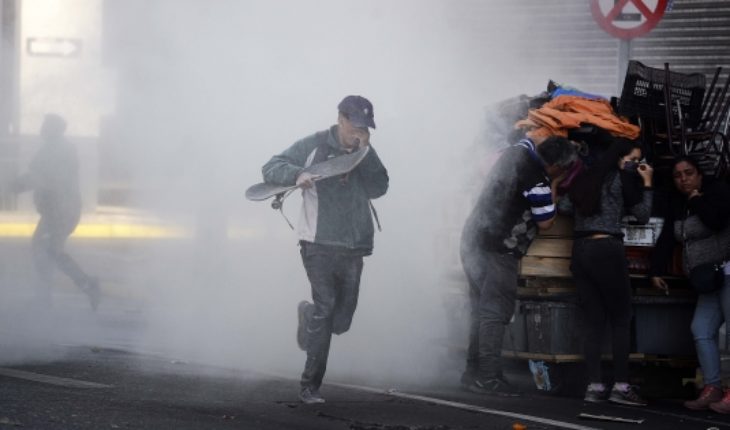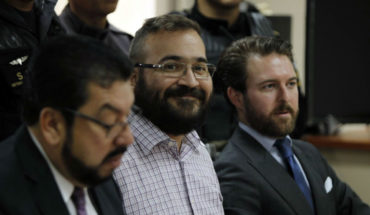The images of the President of the Republic having dinner in a pizzeria in Vitacura while the city in other sectors burned, are the expression of what happens in our country.
A quiet, safe sector that lives a bubble, with income and services similar to Geneva, at the expense of other sectors living as Port-au-Prince.
The first – very minority – is not affected by the value of urban transport, nor by the high prices of food and medicines, nor the pension they will have in the future, nor does it hit them in their budget the rise of services. Their incomes are so high that they spend a much smaller percentage of their income than the poorest, and they can also save, capitalize, increase their wealth.
If the images of the world are made from our experiences, that life that leads them has made them build and live according to partial images of a much more complex reality.
In addition, in addition, a large group of these people feel that they owe nothing to anyone, that they have done themselves, that is, they do not possess the “grateful memory” that requires the construction of a human community, of a common feeling of nation. They can take their wealth elsewhere if this country becomes unsafe, even though it was amassed here with the work of many.
Social inequality creates unhappiness. Richard Wilkinson and Kate Pickett have been saying this for a long time based on hard evidence. In his latest book they delve into “the mental consequences of inequality” and demonstrate that the most unequal societies are dysfunctional. There is a causal relationship between income inequality, mental health and social problems.
On the other hand, the gross social/geographical/residential segregation built by the State/Market, as endorsed by numerous studies in Chile and abroad, is an incubator of social violence given the continuous deterioration of life, insecurity and tension accentuating feelings of disability and plenty of work in society.
Add to that the brutal educational segmentation, which has now been brought to other neighborhoods with bicentennial high schools, the frustration and disenchantment of the children and young people with greater difficulties increases, even more so when they are not a priority for those who govern today, who do not wish to guarantee their rights for fear of the demands that this entails. On this the investigations are devastating and a procession of foreign and Chilean experts has shown this. But those who govern and have power can secure those same rights to their children, because they have the money to do so.
Finally, the continued frustration they experience in not “being able to consume” all that the market offers and promises them (associating much of these goods with happiness), burns rage more strongly and triggers aggression. The social sciences have accumulated empirical studies on this for decades, however, they are not read. With a model of development that has exacerbated consumption by cosifying human beings, and posing to have as more important than being, the consequences that we are seeing are inevitable.
Is all this settled by the State of The Site? No. He hasn’t solved it before, and he won’t solve it now. The disillusioned new generations, more aware of their dignity, expect not gifts but justice; they do not aspire to the same privileges of those who now have the power, but that they are shared more equally; they do not have unbridled expectations in consumption but rather aspire to a basic tranquility in the material and to be able to realize.
This implies painful changes for society that we have built founded on unlimited material progress, on a sacralized market and freedom enthralled by the powerful, but not extended to the rest of society.
In the midst of a convulsed world, it is possible to change this reality. However, those of the past will not, the generation that now governs will not, because their codes and experiences have them limited, and they are imprisoned in a way of existence that transforms them into blind and deaf to this reality.
In fact, very few of them or they have experienced it with the rawness that is lived in our slums. I have in mind a discussion with a director of the national budget of the 1990s about the consequences it was having on the families and people of the ghettos that the MINVU built. His response – from intellectual pride and experienceal ignorance – was that Chile was very effective and efficient in its housing policy and then sent me an economic study of the same DIPRES that demonstrated it.
But that study didn’t say what people were doing to people, the consequences that this way of building city was having on people, on children and young people raised there in the “backyards of our cities”. The list is long, to give some examples we have – since then – the population Los Areneros in Arica, the Oscar Bonilla in Antofagasta, the Juan Pablo II in Copiapó, The Companies in La Serna, La Confraternity, El Castillo and Bajo de Mena in Santiago, Michaihue in Santiago Concepción, Los Alerces in Puerto Montt… Etc.
We can only hope that the new generations of all the social, cultural and economic sectors, with looks of greater dignity (mutual) and with a more equal and just treatment, can access power, and do so from a new way that is from the collective and with a solidarity imprint, without the narcissistic or egocentric burden of the current generation to power (economic, political, cultural, religious), which ends up damaging those space that must always be conceived from public service and not from personal benefit.
The content poured into this opinion column is the sole responsibility of its author, and does not necessarily reflect the editorial line or position of El Mostrador.





